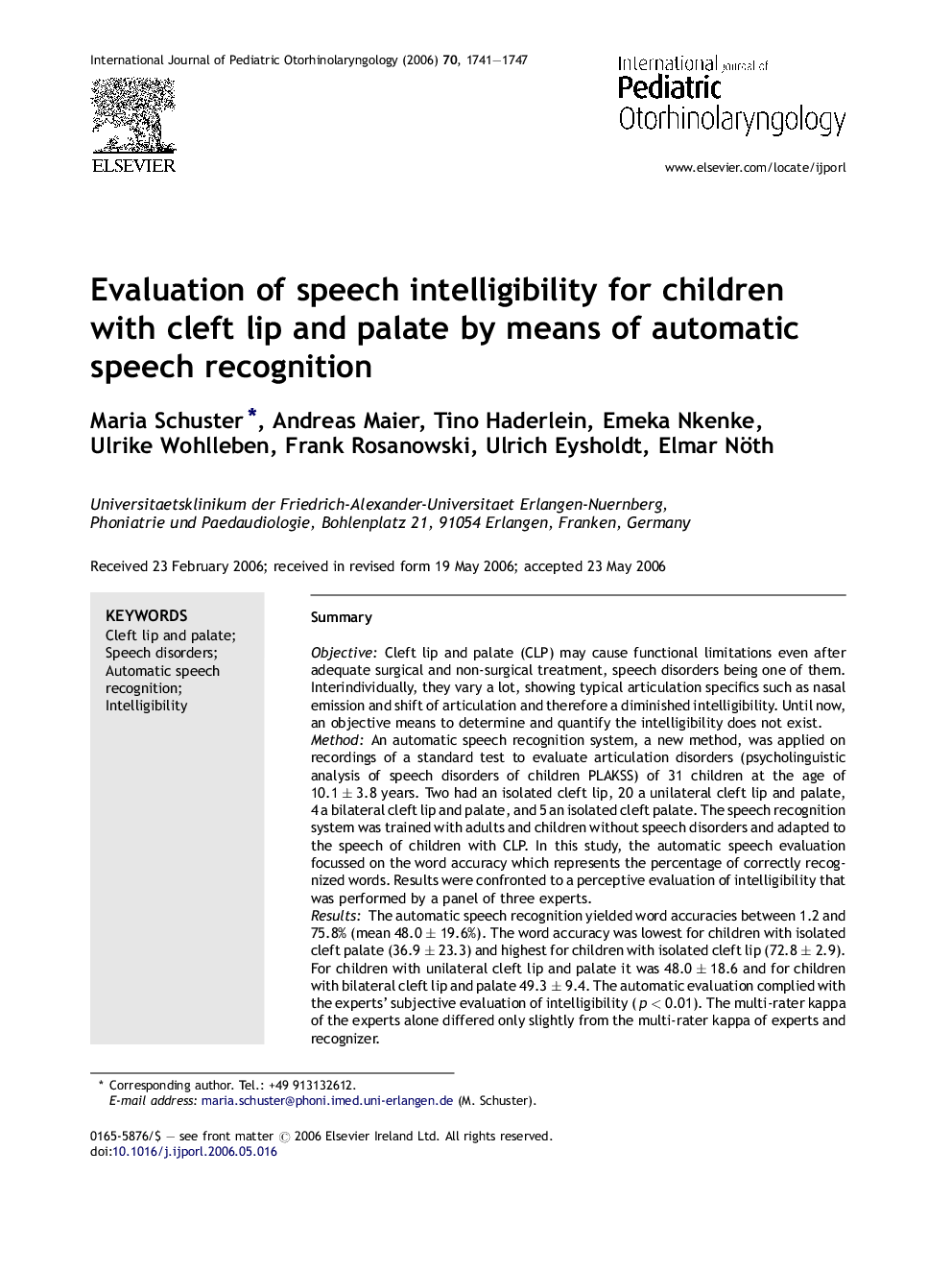| کد مقاله | کد نشریه | سال انتشار | مقاله انگلیسی | نسخه تمام متن |
|---|---|---|---|---|
| 4115769 | 1606102 | 2006 | 7 صفحه PDF | دانلود رایگان |

SummaryObjectiveCleft lip and palate (CLP) may cause functional limitations even after adequate surgical and non-surgical treatment, speech disorders being one of them. Interindividually, they vary a lot, showing typical articulation specifics such as nasal emission and shift of articulation and therefore a diminished intelligibility. Until now, an objective means to determine and quantify the intelligibility does not exist.MethodAn automatic speech recognition system, a new method, was applied on recordings of a standard test to evaluate articulation disorders (psycholinguistic analysis of speech disorders of children PLAKSS) of 31 children at the age of 10.1 ± 3.8 years. Two had an isolated cleft lip, 20 a unilateral cleft lip and palate, 4 a bilateral cleft lip and palate, and 5 an isolated cleft palate. The speech recognition system was trained with adults and children without speech disorders and adapted to the speech of children with CLP. In this study, the automatic speech evaluation focussed on the word accuracy which represents the percentage of correctly recognized words. Results were confronted to a perceptive evaluation of intelligibility that was performed by a panel of three experts.ResultsThe automatic speech recognition yielded word accuracies between 1.2 and 75.8% (mean 48.0 ± 19.6%). The word accuracy was lowest for children with isolated cleft palate (36.9 ± 23.3) and highest for children with isolated cleft lip (72.8 ± 2.9). For children with unilateral cleft lip and palate it was 48.0 ± 18.6 and for children with bilateral cleft lip and palate 49.3 ± 9.4. The automatic evaluation complied with the experts’ subjective evaluation of intelligibility (p < 0.01). The multi-rater kappa of the experts alone differed only slightly from the multi-rater kappa of experts and recognizer.ConclusionAutomatic speech recognition may serve as a good means to objectify and quantify global speech outcome of children with cleft lip and palate.
Journal: International Journal of Pediatric Otorhinolaryngology - Volume 70, Issue 10, October 2006, Pages 1741–1747